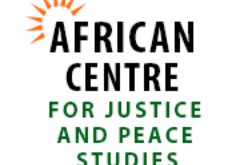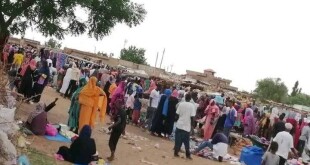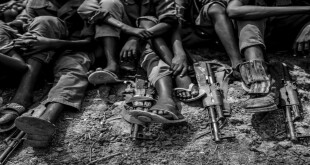(December 2010-January 2011) Over their history, North and South Sudan have struggled to coexist in a single state. The history of post- independence relations is overshadowed by war. The 2005 Comprehensive Peace Agreement (CPA) ended the Second Sudanese War, which devastated the South, killed two million and displaced a further four million. The CPA offered the possibility of renegotiation of the dynamic between the North and South by envisioning an interim period designed to facilitate integration and a more equitable relationship between the North and South, and intended to “make unity attractive”. The CPA culminated in the 9 January 2011 referenda for Southern self-determination and on the status of Abyei, as well as popular consultations in Blue Nile and South Kordofan states. The 2011 referendum for Southern self-determination was considered to be a safety valve, a failsafe to protect southern interests in the democratisation process.
Unfortunately, the interim period was fraught with political obstruction, and disrupted by the crisis in Darfur which shifted international attention to the West of the country. Mistrust deepened between the CPA partners and distracted from the programme of legal reform. When reforms were made, they were largely cosmetic, and in some cases contradicted provisions of Sudan’s Interim National Constitution (INC), which included a comprehensive Bill of Rights. No real, conscientious efforts were made by the ruling National Congress Party (NCP) to make unity realistic for southerners, and the the goal of a “new Sudan” was undermined by John Garang’s death in a helicopter crash just months after signing the CPA. In the months prior to the referendum, delays in logistical and procedural elements of the referendum process, inflammatory rhetoric by senior NCP members, and bombings of the South in Kiir Adem raised concerns that the referendum would reignite war between the North and South. 9 January was a line in the sand for the SPLM, who were rumoured to unilaterally declare secession if the referendum was derailed. Significant last-hour attempts were made by senior NCP officials to reach a last-hour compromise with the Sudan Peoples’ Liberation Movement (SPLM) for unity as others admitted that the campaign for unity had failed and accused the SPLM of working for secession.
Download full issue here: SUDAN HUMAN RIGHTS MONITOR ISSUE 9
(December 2010-January 2011) Over their history, North and South Sudan have struggled to coexist in a single state. The history of post- independence relations is overshadowed by war. The 2005 Comprehensive Peace Agreement (CPA) ended the Second Sudanese War, which devastated the South, killed two million and displaced a further four million. The CPA offered the possibility of renegotiation of the dynamic between the North and South by envisioning an interim period designed to facilitate integration and a more equitable relationship between the North and South, and intended to “make unity attractive”. The CPA culminated in the 9 January 2011 referenda for Southern self-determination and on the status of Abyei, as well as popular consultations in Blue Nile and South Kordofan states. The 2011 referendum for Southern self-determination was considered to be a safety valve, a failsafe to protect southern interests in the democratisation process.
Unfortunately, the interim period was fraught with political obstruction, and disrupted by the crisis in Darfur which shifted international attention to the West of the country. Mistrust deepened between the CPA partners and distracted from the programme of legal reform. When reforms were made, they were largely cosmetic, and in some cases contradicted provisions of Sudan’s Interim National Constitution (INC), which included a comprehensive Bill of Rights. No real, conscientious efforts were made by the ruling National Congress Party (NCP) to make unity realistic for southerners, and the the goal of a “new Sudan” was undermined by John Garang’s death in a helicopter crash just months after signing the CPA. In the months prior to the referendum, delays in logistical and procedural elements of the referendum process, inflammatory rhetoric by senior NCP members, and bombings of the South in Kiir Adem raised concerns that the referendum would reignite war between the North and South. 9 January was a line in the sand for the SPLM, who were rumoured to unilaterally declare secession if the referendum was derailed. Significant last-hour attempts were made by senior NCP officials to reach a last-hour compromise with the Sudan Peoples’ Liberation Movement (SPLM) for unity as others admitted that the campaign for unity had failed and accused the SPLM of working for secession.
Download full issue here: SUDAN HUMAN RIGHTS MONITOR ISSUE 9
(December 2010-January 2011) Over their history, North and South Sudan have struggled to coexist in a single state. The history of post- independence relations is overshadowed by war. The 2005 Comprehensive Peace Agreement (CPA) ended the Second Sudanese War, which devastated the South, killed two million and displaced a further four million. The CPA offered the possibility of renegotiation of the dynamic between the North and South by envisioning an interim period designed to facilitate integration and a more equitable relationship between the North and South, and intended to “make unity attractive”. The CPA culminated in the 9 January 2011 referenda for Southern self-determination and on the status of Abyei, as well as popular consultations in Blue Nile and South Kordofan states. The 2011 referendum for Southern self-determination was considered to be a safety valve, a failsafe to protect southern interests in the democratisation process.
Unfortunately, the interim period was fraught with political obstruction, and disrupted by the crisis in Darfur which shifted international attention to the West of the country. Mistrust deepened between the CPA partners and distracted from the programme of legal reform. When reforms were made, they were largely cosmetic, and in some cases contradicted provisions of Sudan’s Interim National Constitution (INC), which included a comprehensive Bill of Rights. No real, conscientious efforts were made by the ruling National Congress Party (NCP) to make unity realistic for southerners, and the the goal of a “new Sudan” was undermined by John Garang’s death in a helicopter crash just months after signing the CPA. In the months prior to the referendum, delays in logistical and procedural elements of the referendum process, inflammatory rhetoric by senior NCP members, and bombings of the South in Kiir Adem raised concerns that the referendum would reignite war between the North and South. 9 January was a line in the sand for the SPLM, who were rumoured to unilaterally declare secession if the referendum was derailed. Significant last-hour attempts were made by senior NCP officials to reach a last-hour compromise with the Sudan Peoples’ Liberation Movement (SPLM) for unity as others admitted that the campaign for unity had failed and accused the SPLM of working for secession.
Download full issue here: SUDAN HUMAN RIGHTS MONITOR ISSUE 9
010-January 2011) Over their history, North and South Sudan have struggled to coexist in a single state. The history of post- independence relations is overshadowed by war. The 2005 Comprehensive Peace Agreement (CPA) ended the Second Sudanese War, which devastated the South, killed two million and displaced a further four million. The CPA offered the possibility of renegotiation of the dynamic between the North and South by envisioning an interim period designed to facilitate integration and a more equitable relationship between the North and South, and intended to “make unity attractive”. The CPA culminated in the 9 January 2011 referenda for Southern self-determination and on the status of Abyei, as well as popular consultations in Blue Nile and South Kordofan states. The 2011 referendum for Southern self-determination was considered to be a safety valve, a failsafe to protect southern interests in the democratisation process.
Unfortunately, the interim period was fraught with political obstruction, and disrupted by the crisis in Darfur which shifted international attention to the West of the country. Mistrust deepened between the CPA partners and distracted from the programme of legal reform. When reforms were made, they were largely cosmetic, and in some cases contradicted provisions of Sudan’s Interim National Constitution (INC), which included a comprehensive Bill of Rights. No real, conscientious efforts were made by the ruling National Congress Party (NCP) to make unity realistic for southerners, and the the goal of a “new Sudan” was undermined by John Garang’s death in a helicopter crash just months after signing the CPA. In the months prior to the referendum, delays in logistical and procedural elements of the referendum process, inflammatory rhetoric by senior NCP members, and bombings of the South in Kiir Adem raised concerns that the referendum would reignite war between the North and South. 9 January was a line in the sand for the SPLM, who were rumoured to unilaterally declare secession if the referendum was derailed. Significant last-hour attempts were made by senior NCP officials to reach a last-hour compromise with the Sudan Peoples’ Liberation Movement (SPLM) for unity as others admitted that the campaign for unity had failed and accused the SPLM of working for secession.
Download full issue here.
This post is also available in: الإنجليزية
 African Centre for Justice and Peace Studies ACJPS | المركز الافريقي لدراسات العدالة و السلام
African Centre for Justice and Peace Studies ACJPS | المركز الافريقي لدراسات العدالة و السلام



